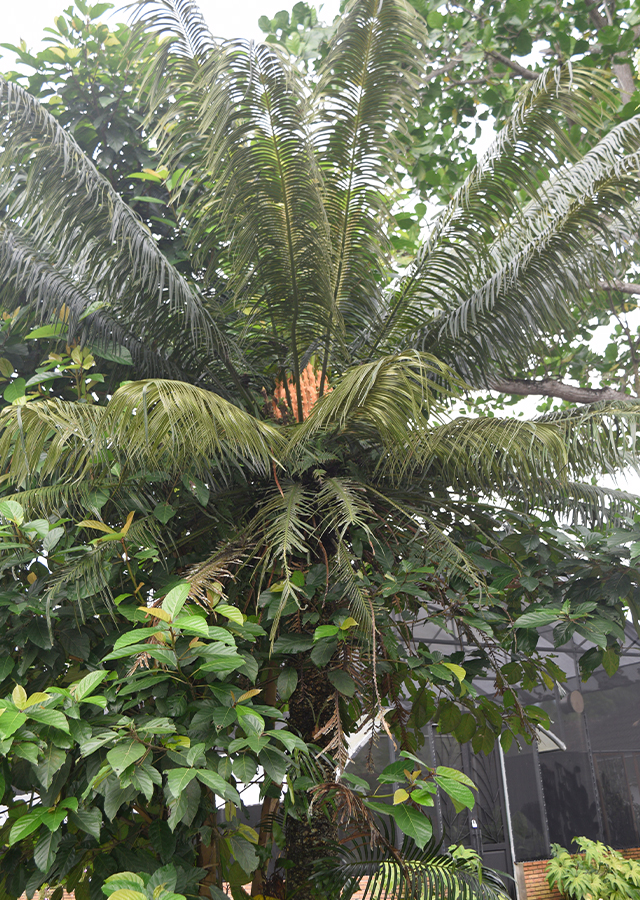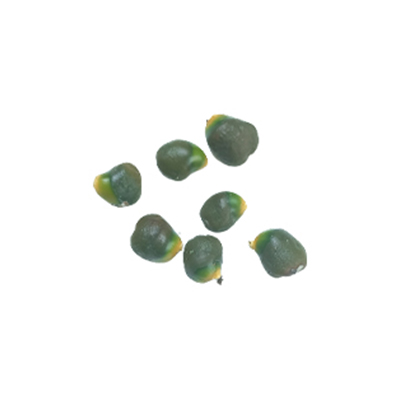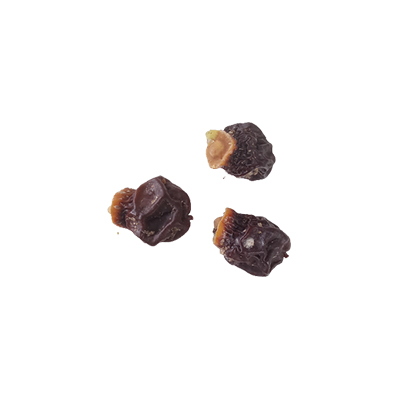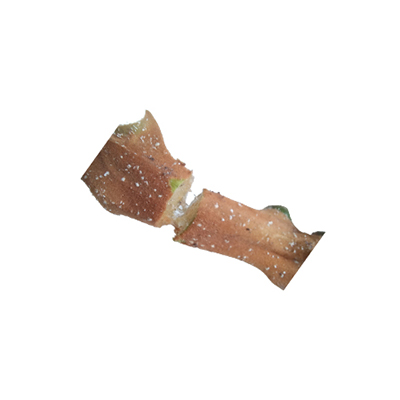Queen sago
Cycas rumphii Miq.
Cycadaceae
Location in our garden
Principal



Synonym
Cycas celebica Miq.
Cycas speciosa D.Don
Zamia consoniana G.Don
Habitus
Cycad. Dioecious palm-like plant with an erect, sometimes branched, growing up to 6 m in height
Part Used
Leaves
Seeds
Fruit
Sap
Growing Requirements
Full Sunshine
Need Shade
Habitat
Forest
Coastal
Terrestrial
Overview
Queen Sago is a native species of Indonesia that inhabits closed wood-lands or forest near shorelines in South Borneo, N.E. Java, Maluku, Papua and Sulawesi. It has distribution to India, Sri Lanka, South-East Asia, Australia, and Micronesia. The plant has a range of traditional uses, especially as a food and a medicine. The youngest leaves and seed are edible. The youngest leaves are cooked and eaten as a vegetable, and seed are prepared as flour. Fresh seeds are poisonous. The pith in the stem is often harvested from the wild and used as a food source in its native range, though recent research has shown that this is a potentially dangerous practice since the pith can cause chronic nervous disorders if it is not treated properly. It is not to be recommended, especially because its use often means the death of the plant and it is becoming rare in the wild. The plant is classified as 'Near Threatened' in the IUCN Red List of Threatened Species (2011). Queen sago is traditionally used in India, Bangladesh and Indonesia as a medicine to cure wide variety. The plant is also important as an ornamental.
Vernacular Names
Hua nan su tie, Long wei su tie, Ci ye su tie, Long kou su tie (Chinese), Cycas de Ceylan (French), Sagopalme, Sagopalmfan (German), Kikasu rumufii (Japanese), Sagovnik rumfa (Russian), Pitogo (Tagalog), Mong-tain (Burma), Paku gajah, Bogak (Malay).
Agroecology
Queen sago occurs over a wide range in coastal areas, and often found on stabilized dunes composed of coral sands and coral limestone, at elevations up to 200 metres. Succeeds in the hot tropics and subtropics. It prefers a sunny position, but also succeeds in light shade. Requires a strong loam with sharp sand and good drainage. Succeeds in dry and poor soils.
Morphology
- Roots - Has structures known as coralloid roots. These roots branch off from the taproot or secondary roots.
- Trunk - Erect, stout and woody. The bark is grey, fissured into diamond and rectangular-shaped.
- Leaves - In a dense terminal whorl, pinnate, up to 2.5 m long and with 50-150 pairs of leaflets, smooth and shining
- Flowers - United in a cone, female cone terminal with numerous carpophylls, up to 50 cm long.
- Fruits - Smooth, ovoid to ellipsoid, 3 to 5 centimeters long.
- Seeds - Ovoid-ellipsoid, 3-6 cm × 2.5-5 cm, orange.
Cultivation
- Propagated by seed. Bottom heat at about 27°c will hasten seed germination dramatically.
- Young roots are quite brittle and once germination takes place, the root grows rapidly. It is important to pot up the seedlings at this time in order to give them enough root-space.
Chemical Constituents
Resin, cycasin, β-glycosidase, amentoflavone, podocarpusflavone A, 2, 3-dihydroamentoflavone, 2, 3-dihydrohinokiflavone, isoginkacin, bilobetin.
Traditional Medicinal Uses
- Studies have shown antibacterial, aromatase inhibitory properties.
- Male bracts used are a stimulant and aphrodisiac.
- Seeds are used for dizziness, headaches, sore throats, and powdered roasted whole seed is mixed with coconut oil and applied to wounds, boils, itchy skin lesions.
- In India, tribal people of the Nicobar Islands use the plant topically for fever.
- The juice of tender leaves is useful in the treatment of flatulence and vomiting.
- The gum has the repute of being a good antidote for snake and insect bites.
Part Used
Reference Sources
- PROSEA. 2016. Cycas rumphii (PROSEA). https://uses.plantnet-project.org/en/Cycas_rumphii_(PROSEA). 22-09-2021.
- Stuartxchange. 2018. Philippine Medicinal Plants: Pitogo. http://www.stuartxchange.org/Pitogo.html. 22-09-2021.
- Useful Tropical Plants Database. 2021. Cycas rumphii. https://tropical.theferns.info/viewtropical.php?id=Cycas+rumphii. 22-09-2021.
- Khan AV et al. 2021. Research Article: Antibacterial Activity of Cycas rumphii Miq. Leaves Extracts against Some Tropical Human Pathogenic Bacteria. Science Alert. https://scialert.net/fulltext/?doi=jm.2011.761.768. 22-09-2021.



